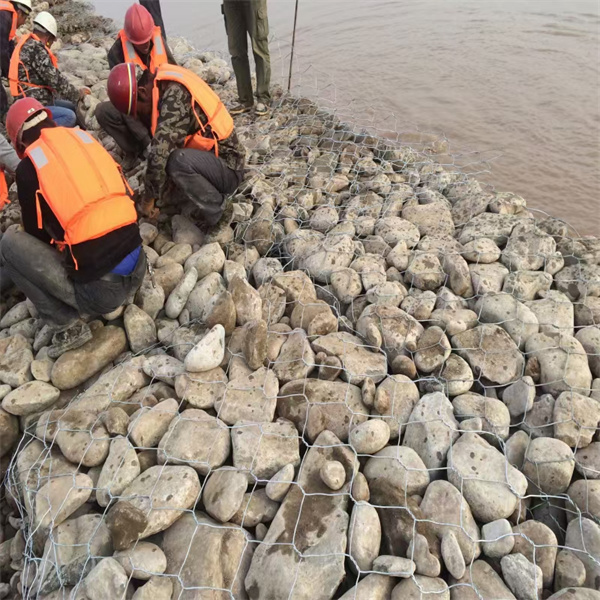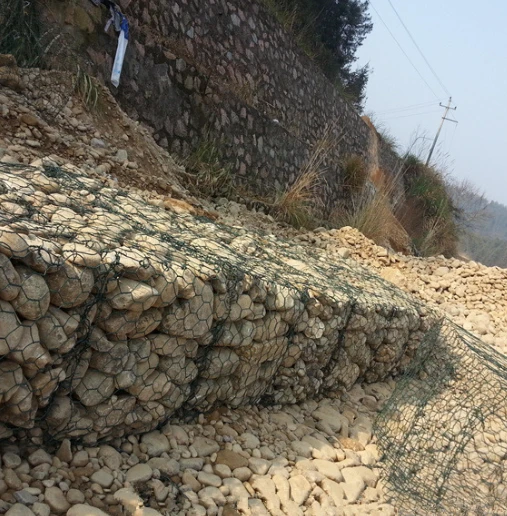ஜூன் . 01, 2025 05:02 Back to list
Stone Cage Nets for Erosion Control & Construction Trusted Suppliers
Paragraph structure overview:
- Fundamentals of erosion control structures
- Technical specifications and performance data
- Material science behind durability
- Global manufacturer comparison analysis
- Custom design parameters available
- Infrastructure project case studies
- Procurement best practices summary

(stone cage net)
Understanding Stone Cage Nets in Modern Infrastructure
Gabion technology forms the backbone of contemporary erosion prevention systems. Stone cage nets, specifically engineered containment structures, provide versatile solutions for civil engineering challenges worldwide. These galvanized steel mesh systems combine geological materials with metallurgical design to create semi-permeable barriers against hydraulic forces.
Modern fabrication techniques enable precision assembly of double-twisted hexagonal wire configurations capable of withstanding 55-60 kN/m tensile loads. Their structural flexibility makes these systems ideal for channel lining applications where hydrological dynamics require adaptive reinforcement. Current ASTM A975-11 certified variants provide superior resistance to mechanical stress compared to traditional riprap methods.
Technical Specifications and Engineering Advantages
Manufacturers adhere to rigorous quality standards across all production phases. Premium zinc-aluminum coatings (Galfan) applied to high-tensile steel wires yield corrosion protection exceeding standard galvanization by 250%. Standard panel dimensions range from 2m×1m×1m to 4m×2m×1m with wire gauges between 2.0-4.0mm.
The structural integrity of stone cage systems derives from mechanical interlocking of aggregates within constrained volumes. Hydraulic models confirm 92% permeability retention after 25-year service cycles when utilizing 70-200mm graded fill material. This permeability maintains natural water table equilibria while reducing hydrostatic pressure that compromises rigid barriers.
Critical Manufacturing Variations Between Producers
| Technical Features | European Factories | Asian Suppliers | North American Plants |
|---|---|---|---|
| Wire Coating Composition | Zinc-5% aluminum alloy | Standard zinc coating | Galfan (Zn-5%Al-MM) |
| Minimum Break Load (kN/m) | 48 | 35-42 | 52 |
| Panel Connection Systems | Helical fasteners | C-rings | All-steel clips |
| Factory Certification | ISO 9001:2015 | GB/T 19001 | ASTM/AASHTO |
| UV Resistance (Accelerated Testing) | 4,500 hours | 2,800 hours | 5,000+ hours |
Customization Capabilities Across Applications
Industrial producers accommodate specialized project requirements through parametric design adjustments. Coastal installations benefit from increased polymer content within coating compounds (PVC overlay thicknesses between 0.3-0.8mm) that counteract saline degradation. Mountainous terrain projects utilize modified basket geometries to withstand rockfall impacts.
Sophisticated fabrication systems enable manufacturing variances including:
- Non-standard panel sizes up to 6m length
- Anchoring systems optimized for substrate conditions
- Variable opening dimensions (60×80mm to 120×150mm)
- Specialized filling recommendations by hydraulic conditions
Implementation Case Studies and Performance Metrics
The Rhine River rehabilitation project demonstrates this technology's efficacy at scale. Over 8.2km of reinforced banks employed custom 3.5m×1.5m×1.0m configurations that resisted flood velocities exceeding 5.4 m/sec. Subsequent monitoring revealed just 12% structural displacement after two decades versus predicted values of 28-35%.
Highway slope stabilization applications near Hong Kong International Airport decreased maintenance costs by 67% compared to conventional reinforced earth alternatives. The stone cage installation successfully weathered tropical storm conditions producing 450mm precipitation within 48-hour periods.
Strategic Selection of Fabrication Partners
Vetting protocols for stone cage net
suppliers should include comprehensive mill certification audits. ISO 1461 verification ensures coating thickness uniformity across 97% of wire surfaces. Production facilities possessing rotary extrusion capabilities yield more consistent wire diameters than conventional drawing methods.
Batch traceability systems represent critical quality indicators, with advanced production facilities implementing QR tracking throughout manufacturing stages. Annual third-party verification of mechanical properties and corrosion resistance remains essential.
Optimizing Stone Cage Net Specifications
Specification engineers should conduct thorough hydraulic analyses before selecting configurations. Critical design parameters include peak water velocity calculations, impact load predictions, and maximum scour depth projections. Field inspections at existing installations reveal that proper installation methodology contributes more to longevity than material enhancements alone.
Coordinating directly with factories provides technical advantages, as production specialists can recommend specific configurations matching project requirements. Quality-focused fabricators maintain product research divisions dedicated to performance verification through simulated weathering testing.

(stone cage net)
FAQS on stone cage net
Q: What is a stone cage net used for?
A: A stone cage net is used to stabilize soil, prevent erosion, and protect structures in civil engineering projects. It is filled with stones to create flexible, permeable barriers. Common applications include riverbank protection and road construction.
Q: How to choose reliable stone cage net suppliers?
A: Look for suppliers with certifications (e.g., ISO), proven industry experience, and positive customer reviews. Ensure they offer customizable sizes and materials. Request samples to verify product quality before bulk orders.
Q: What materials are used in stone cage net factories?
A: Factories typically use galvanized steel wire, PVC-coated wire, or stainless steel for durability and corrosion resistance. The wire is woven into hexagonal mesh structures. Material choice depends on environmental conditions and project requirements.
Q: Do stone cage net factories provide customization?
A: Yes, most factories offer customization in mesh size, wire diameter, and panel dimensions. They can also tailor coatings (e.g., PVC) for specific environments. Provide project details to get optimized solutions.
Q: What quality checks ensure stone cage net durability?
A: Factories test wire tensile strength, coating adhesion, and mesh integrity. Products should meet standards like ASTM or EN. Regular third-party inspections further guarantee long-term performance in harsh conditions.
-
Visualizing Gabion 3D Integration in Urban Landscapes with Rendering
NewsJul.23,2025
-
The Design and Sustainability of Gabion Wire Mesh Panels
NewsJul.23,2025
-
The Acoustic Performance of Gabion Sound Barriers in Urban Environments
NewsJul.23,2025
-
Mastering the Installation of Galvanized Gabion Structures
NewsJul.23,2025
-
Gabion Boxes: Pioneering Sustainable Infrastructure Across the Globe
NewsJul.23,2025
-
Custom PVC Coated Gabion Boxes for Aesthetic Excellence
NewsJul.23,2025
-
Installation Tips for Gabion Wire Baskets in Erosion Control Projects
NewsJul.21,2025






